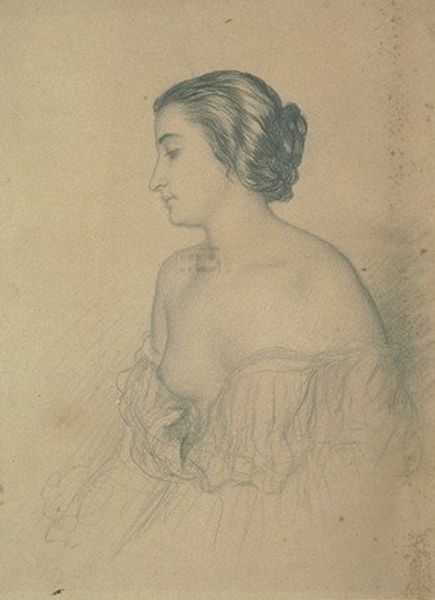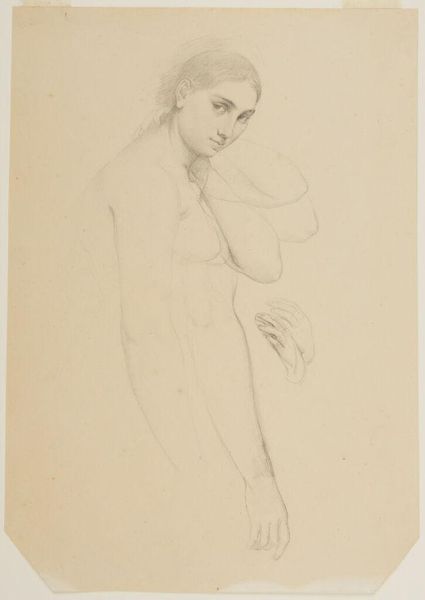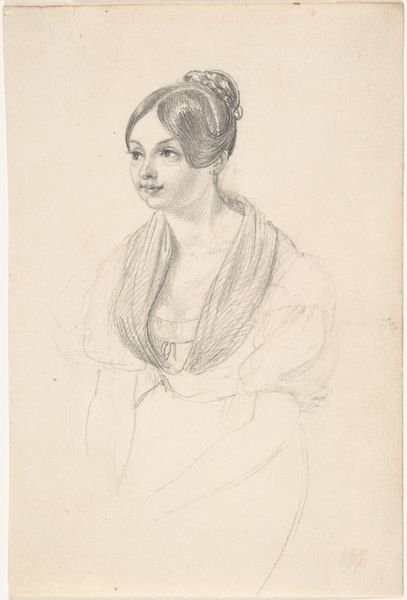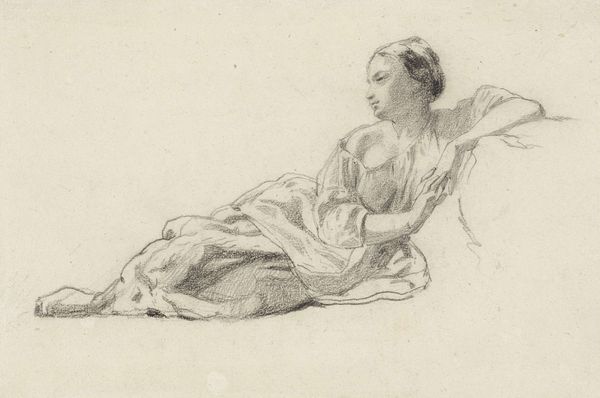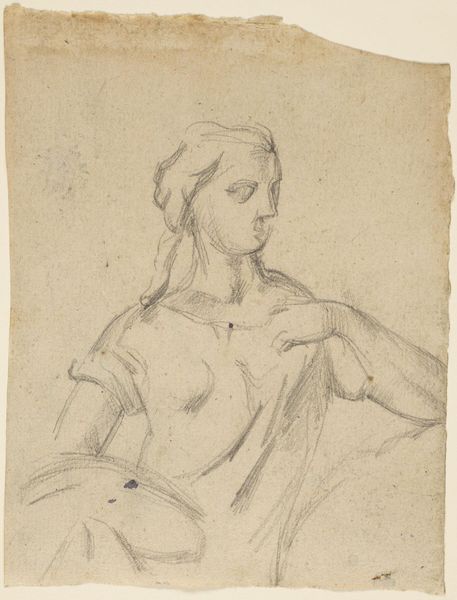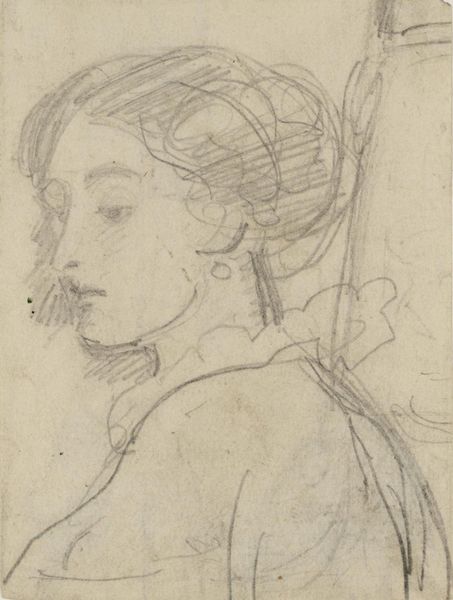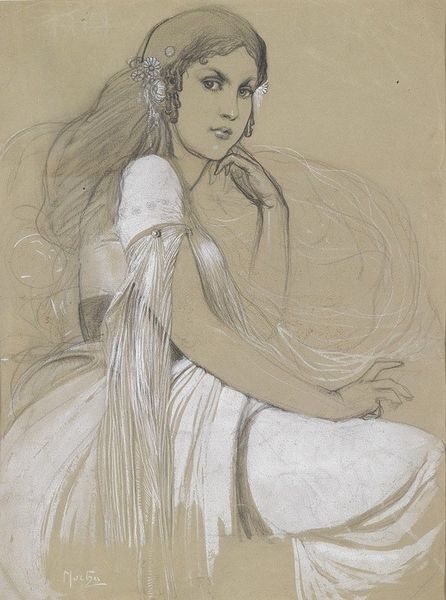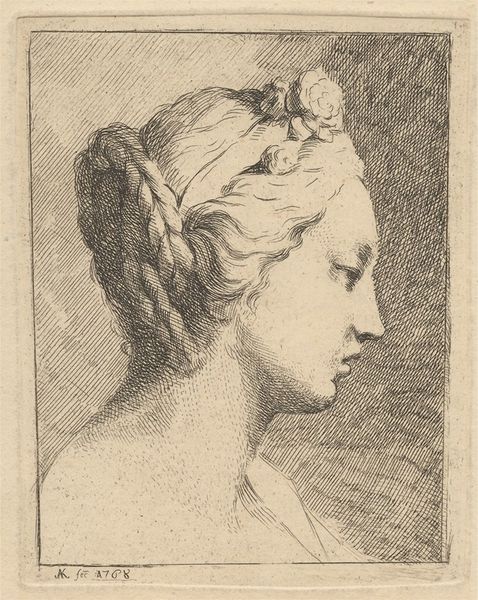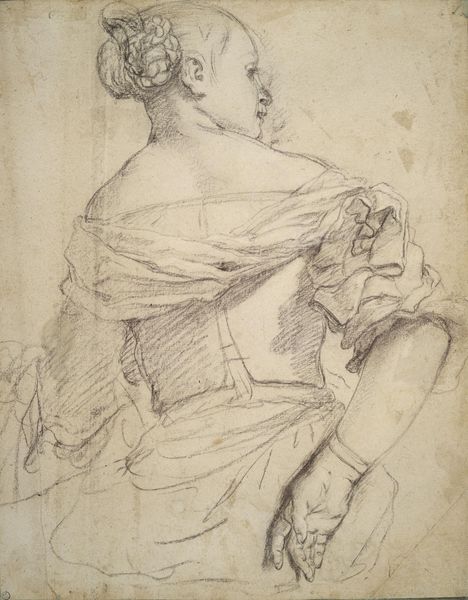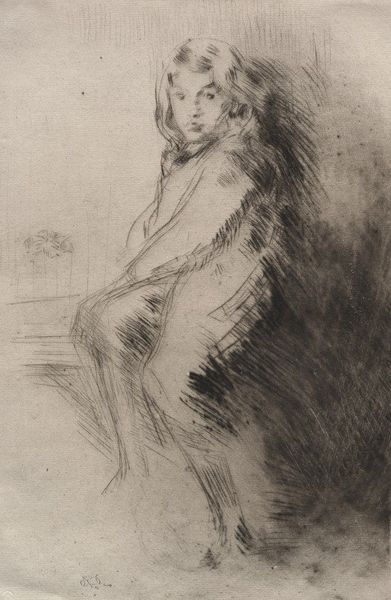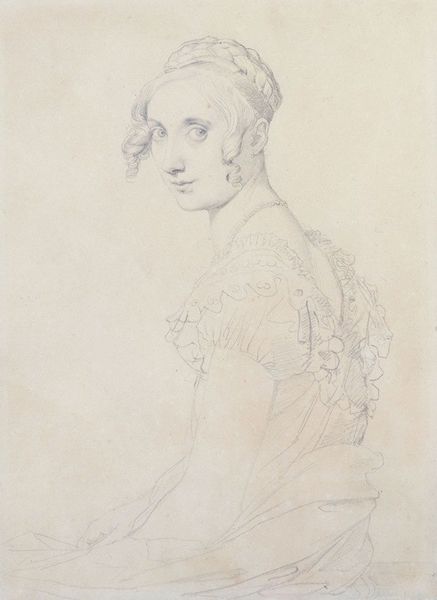
drawing, pencil
#
portrait
#
drawing
#
figuration
#
pencil drawing
#
pencil
#
portrait drawing
#
academic-art
#
nude
Copyright: Public Domain: Artvee
Editor: Here we have Ingres's pencil drawing, "Study for ‘Raphael and the Fornarina’," circa 1814. It's incredibly delicate; I’m drawn to the way he captures the softness of the figure’s skin with such precision. What do you see in this piece, particularly concerning its historical context? Curator: This drawing is interesting precisely as a study. It speaks to the academic practices of the time. Ingres is engaging with, and also solidifying, the idealization of the female nude within the artistic establishment. Think about the 'politics of imagery' here: How does this idealized form, presented as timeless beauty, reflect or reinforce social norms and power structures? Editor: That makes sense. So, the artwork isn't just about beauty, it is part of a larger system of representation? Curator: Exactly. Museums and galleries play a vital role in canonizing certain representations. How do institutions influence which narratives about beauty, about the body, are given prominence, and how might this influence artists' creative choices? It's not simply about skill, but also about navigating a system. Editor: It's interesting to consider the artist working within the boundaries, defining themselves by relating to that context rather than simply showing an aesthetic ideal. Is it subversive at all? Curator: Ingres was respected for working inside of those expectations, but some read in it also a subtle interrogation of its tropes. One way is simply that it is a sketch - it could allow some appreciation of process - or a challenge about where the skill is exactly demonstrated in representation. What did you think it was trying to say, and how is it displayed, distributed, or legitimized in a social setting? Editor: I've definitely gained a new appreciation for how academic art can function as more than just technical skill, how it actually engages in a conversation with established norms. Curator: And how our perception of it is filtered by those very norms! Thinking about the art object in the social world, not just in isolation, brings it to life.
Comments
No comments
Be the first to comment and join the conversation on the ultimate creative platform.
